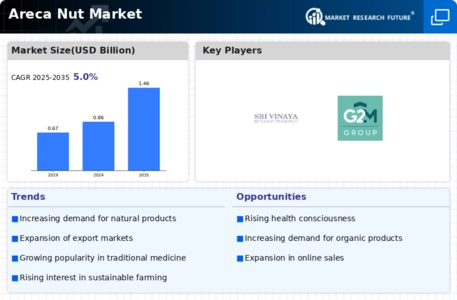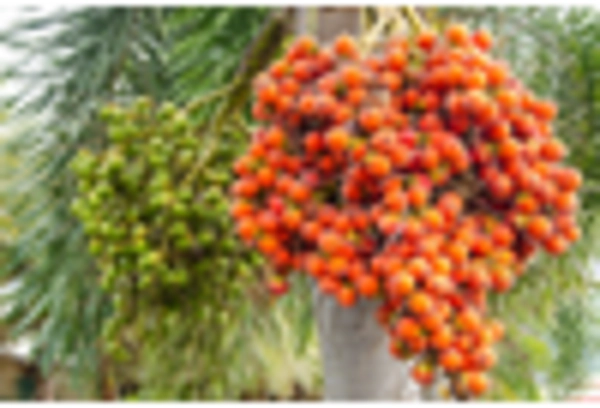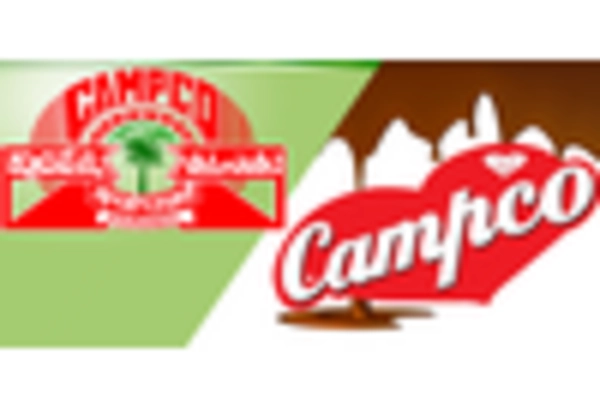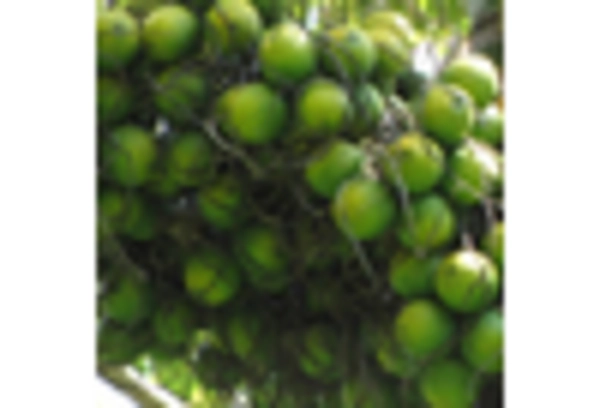Market Trends
Key Emerging Trends in the Areca Nut Market
Because areca nuts are used in traditional traditions and consumed in a variety of ways, their consumption in India is growing at a faster rate than the global market CAGR. The market for areca nuts in the nation is growing as a result of the nuts' usage in different-flavored betel leaves. There are numerous methods of preparing them, such as baking, boiling, roasting, drying, frying, and curing. Raw or processed areca nuts are frequently combined with tobacco. Additionally, they are often utilized in industrially manufactured goods like pan masala and gutka. It is also anticipated that these factors will boost India's imports.
The Areca Nut market has experienced notable trends in recent years, reflecting the dynamic nature of consumer preferences and global trade dynamics. Areca Nut, also known as betel nut, is a popular consumable in many Asian countries, particularly in India, Bangladesh, Myanmar, and parts of Southeast Asia. One prominent trend shaping the market is the increasing awareness of health concerns associated with Areca Nut consumption. As health consciousness rises globally, consumers are becoming more mindful of the potential adverse effects of chewing betel nut, including oral health issues and an increased risk of oral cancer. This growing awareness has led to a shift in consumer behavior, with some opting for alternative and healthier snacks.
On the other hand, the Areca Nut market has also seen opportunities arising from the nut's traditional and cultural significance. In various Asian societies, the betel nut holds cultural and social importance and is often used in religious ceremonies and social gatherings. This cultural relevance has helped maintain a steady demand for Areca Nut, especially in regions where these traditions are deeply rooted. Moreover, there has been a surge in the use of Areca Nut extracts in traditional medicine and Ayurveda, further expanding its market potential.
Globalization and the ease of international trade have played a pivotal role in shaping the market trends of Areca Nut. The increased connectivity between regions has facilitated the export and import of Areca Nut products, leading to a more integrated global market. This has allowed suppliers and producers to tap into new markets and diversify their customer base. Additionally, the Areca Nut market has witnessed innovations in processing and packaging, enhancing the product's shelf life and quality, thus making it more appealing to a wider audience.
Government regulations and policies also play a crucial role in influencing the Areca Nut market trends. In some regions, authorities have imposed restrictions or bans on the sale and consumption of Areca Nut due to its potential health risks. These regulatory measures have had a significant impact on the market dynamics, affecting both production and consumption patterns. Conversely, in regions where Areca Nut cultivation is a major economic activity, governments have implemented supportive policies to boost production and exports, contributing to the overall growth of the market.
The Areca Nut market is not only influenced by regional factors but is also affected by global economic trends. Fluctuations in currency exchange rates, trade tensions, and economic uncertainties can impact the pricing and demand for Areca Nut products in the international market. Producers and traders need to stay vigilant and adapt to these macroeconomic trends to navigate the market successfully.

















Leave a Comment